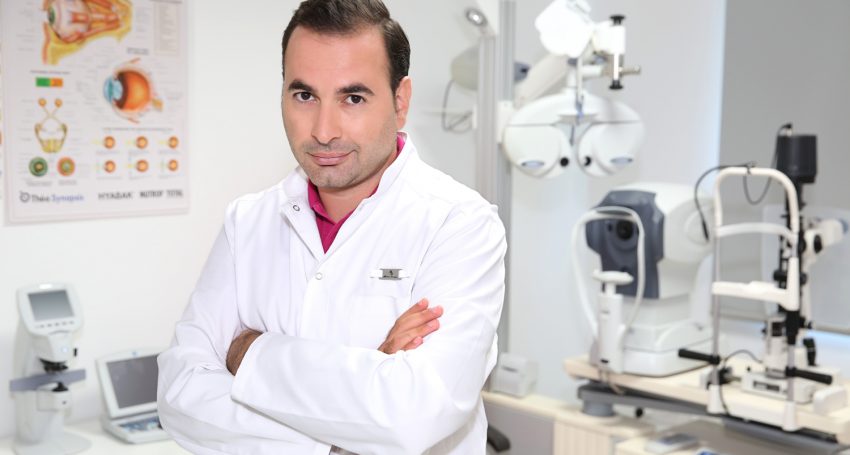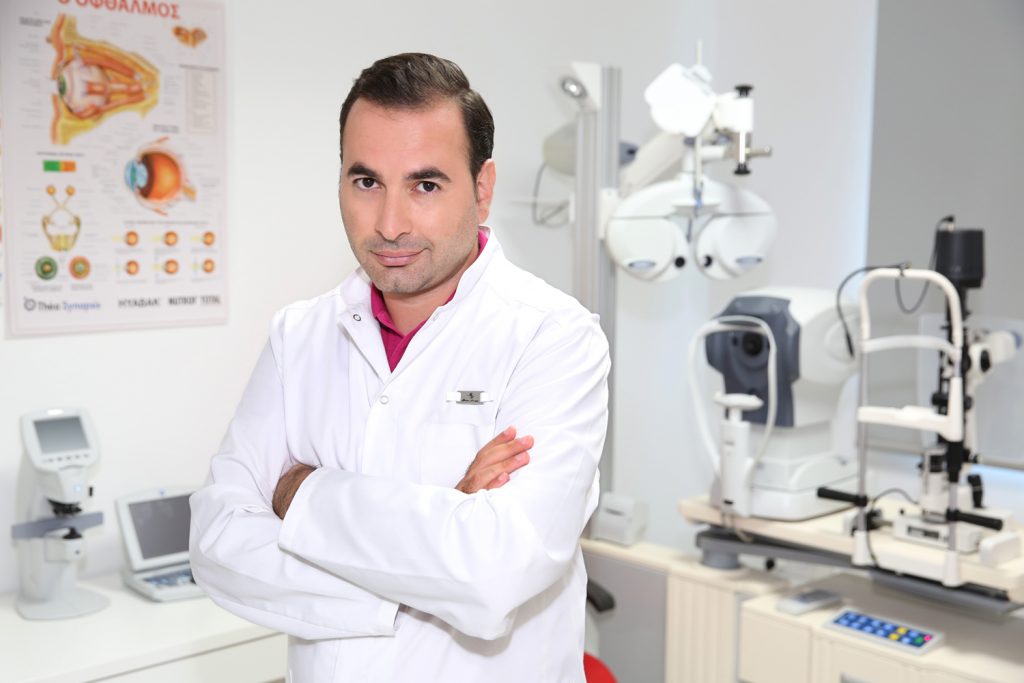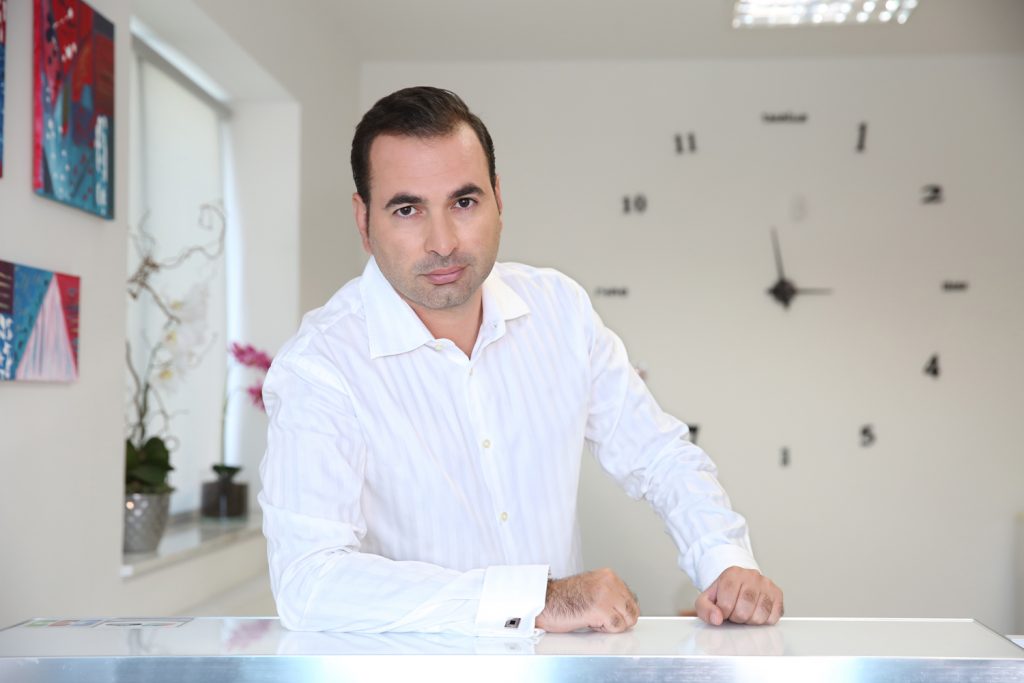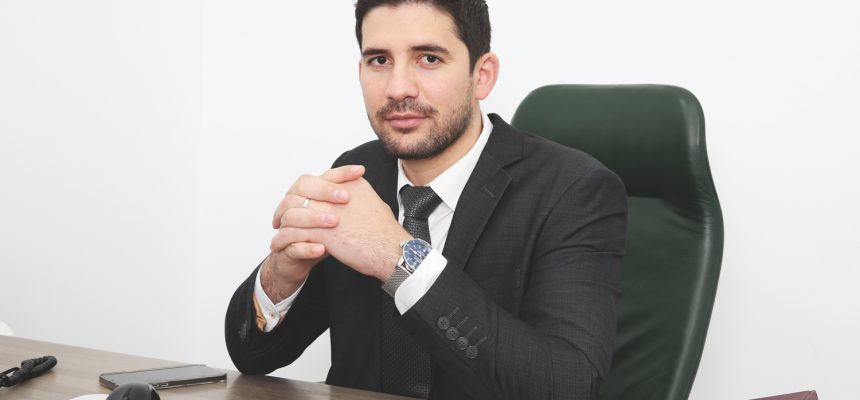Grigory Chilingaryan is a fourth-generation hereditary doctor, one of the few Russian-speaking Ophthalmologists in Cyprus. In an interview with Premiere magazine, he communicates the innovative methods of treatment and techniques applied to eye diseases and the visionary ways to maintain sharp-vision.
How did you choose this profession – or maybe, did the profession chose you?
The choice of my profession in a broad sense was predetermined, perhaps long before my birth. I am a hereditary doctor of the fourth generation. The achievements of my medical ancestors have received worthy recognition in the professional world, their certificates are notable endorsements, also their titles and, of course, scientific heritage.
I chose the specialty to be an ophthalmologist consciously, having familiarised myself with all areas in medicine and focusing on the most interesting to me. Ophthalmology is a profession whereby, in addition to theoretical knowledge, logic, flexible thinking, and prudence are needed. Also requiring a surgical component.
Why did you decide to open a private practice in Cyprus?
I have lived in Cyprus since childhood, Limassol is my hometown. Here I grew up, studied in a Greek school – I am fluent in four languages, but Greek is the main one. After many years of scientific and practical activity abroad, having gained invaluable experience, I wanted to be at home again, to live in my beloved city, to treat and help people.
What problems do patients most often address to you?
In relation to the recently introduced in Cyprus state health care system GESY, upon which we work alongside with, also including the admission of patients on a private health insurance basis, the range of circumstances is quite extensive. Of course, given the climatic conditions, conjunctivitis most often has to be dealt with in all age groups. Refractive errors such as myopia, hyperopia and astigmatism, as well as keratoconus, are common in children and the younger generation. Middle-aged and elderly patients are more likely to be treated with cataracts, glaucoma, age-related macular degeneration, and diabetic retinopathy.
What is the main direction of your activity in the mainstream of ophthalmology?
I advise patients with any pathologies of the organs of vision, of all age groups, including children. But I specialise in the anterior segment of the eye – this area includes conservative and surgical treatment of diseases such as glaucoma, cataract, keratoconus, as well as refractive (laser) correction of myopia, hyperopia and astigmatism.
What clinic do you operate at?
I operate on glaucoma and cataracts at the Limassol Ophthalmological Center, and I do refractive laser correction at the Ygia clinic.
How far has ophthalmology advanced in recent years?
Ophthalmology has traditionally been one of the most progressive specialties in medicine, and in the last 20 years, the steps forward have been simply gigantic, both in the diagnostic industry and in the medical one. Especially with regard to various surgical techniques. Thanks to this, today we can diagnose diseases as quickly, in detail and correctly, as possible, and then choose the most gentle, effective and safe method of treatment for each patient individually.
Tell us about modern innovative methods of treating eye diseases.
Modern methods of treating eye pathologies are directly related to the invention of new equipment or implantable devices.
So, in glaucoma, the most advanced practice today is the gentle method of laser micro-pulse trabeculoplasty, which, if necessary, can be reused after four to six months, as well as surgical treatment using various shunts (devices), depending on the stage of the disease.
The most modern approach to cataract is FemtoCataract: traditional phacoemulsification is accompanied by a femtosecond laser. As a rule, instead of a monofocal artificial lens, preference is given here to a premium lens, which can provide acute postoperative vision at all distances. This method is very popular in the age group from 45 to 70 years old, when patients do not want to wear glasses for various reasons.
To prevent the progress of keratoconus pathology, corneal crosslinking and implantation of introstromal rings are now used. In more serious stages of the disease, patients are offered anterior deep non-through keratoplasty.
Finally, the most modern approach to refractive surgery is FemtoLasik. Two lasers are involved here: the first makes a thin dosed cut, and the second directly corrects the anomaly. This is a safe and effective technique; its absolute advantage over its predecessors is the fastest (24 hours) postoperative restoration of vision. In addition, at the same time, the patient’s symptoms of discomfort disappear: photophobia, lacrimation and sensation of a foreign body.
Is the average age of your patients changing over time, because young people are now massively using gadgets?
Perhaps yes, the number of young patients has increased. In connection with the abundant informatisation of life, we spend more and more time with gadgets, consequently the load on vision has increased, and lifestyles have become more passive effectively contributing to the “rejuvenation” of some eye diseases.
What advice can you give to those who want to preserve their vision for as long as possible?
Avoid stress as much as possible. Use sunglasses. Eat a balanced diet, do not overdo it with alcohol, coffee, salt and carbohydrates, include foods with beta-carotene and Omega-3 in the diet. Spend limited time with gadgets. And, of course, periodically check with an ophthalmologist – this is especially important for patients who already have diagnosed pathologies.
Dr. Grigoris Chilingaryan Eye Clinic (opposite Ygia Polyclinic Private Hospital Clinic), Limassol
+357 25737334





